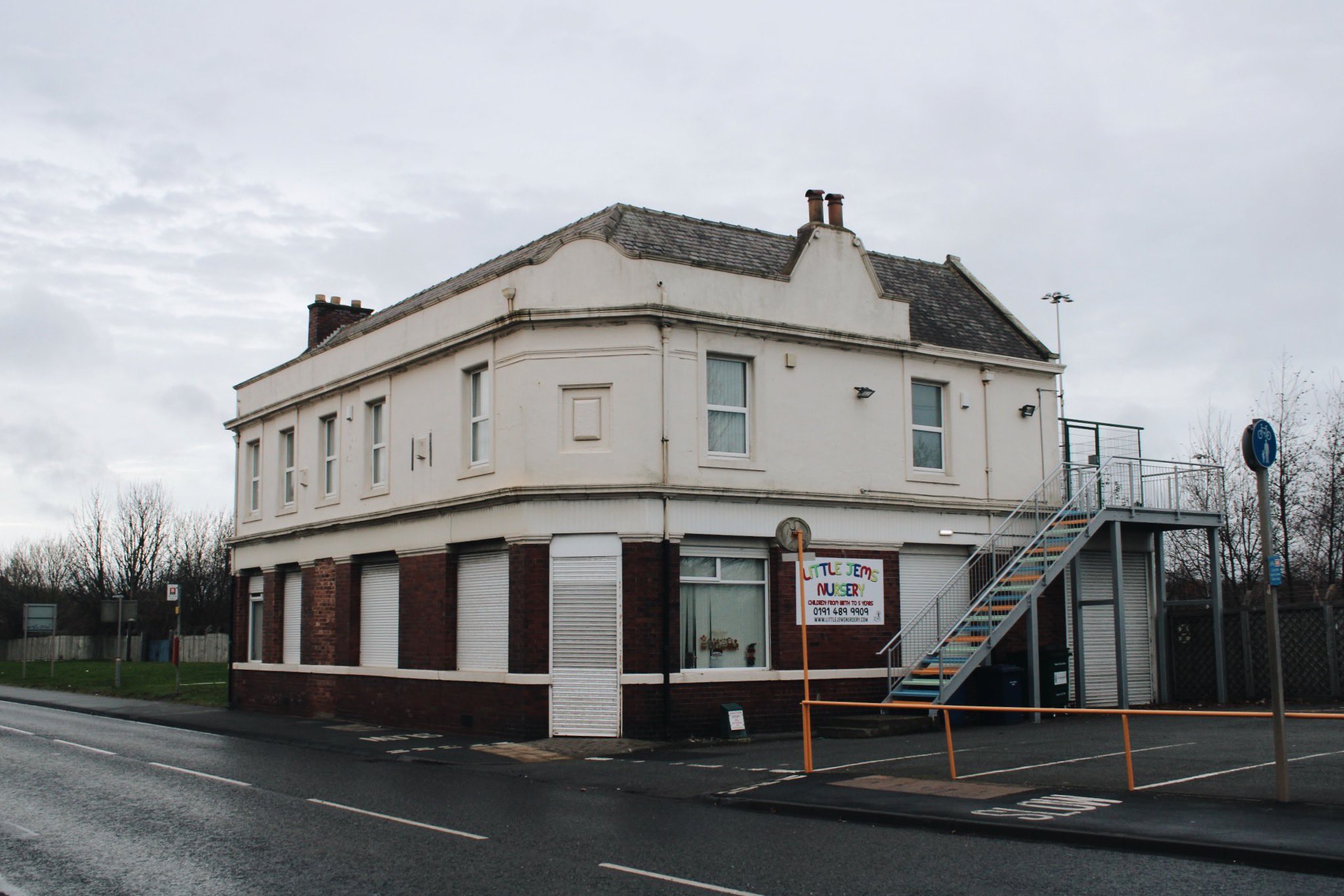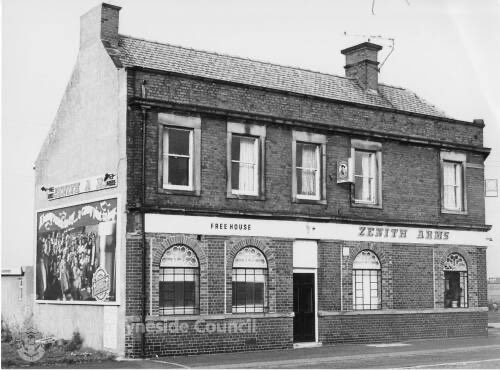
Jarrow
The Alkali Inn, Jarrow
Last Updated:
27 Dec 2024
Jarrow
This is a
Pub
54.977719, -1.466318
Founded in
Current status is
Extant
Designer (if known):

Now a children's nursery
To Swinburne Street, East Jarrow and its last remaining building from the days of the tramways & chemical industry. The latter gives us some context to the name of this old pub - The Alkali Inn.
It had stood here at the earliest since 1839 but potentially the 1850s, providing a watering hole for the vitriol & alkali workmen coming from the same side of the street. John Lamb was its first known publican. It was previously part of a longer terrace of 4 other dwellings backing on to the Bede Works and Barium Works.
The landowner in the 1880s, though likely much earlier, was W H Allison Esq of Hebburn Hall, previously one of the senior magistrates and Mayor of Sunderland. He was also previously a brewer - making for a nice tie inn here.
It appears to be have been turned into a hotel around the turn of the 20th century, which means there was a possible rebuild to accommodate rooms on the first floor. It was around this time too that a young Catherine Cookson would be sent here by her grandad to collect jugs of beer - making for one of the most notable bits of folklore around this inn.
It continued operating as the Alkali for the next 80 or so years until being renamed the “Zenith”, apparently being the high point of the landlady’s career up until that point. It was also for a short stage named Bede's Tavern perhaps at the same time as the opening of Bede's World (as suggested by @gordona.bsky.social) in 1993. It remained under this guise throughout that decade but later reverted back to the Alkali.
It’s now a children’s nursery, which I always find funny given the countless occasions of rowdiness noted in the newspapers!
Listing Description (if available)


Both the maps shown illustrate East Jarrow from the mid 19th century through to the 1910s. Though Jarrow Lodge and the Lake House had existed much earlier, East Jarrow really started to grow in the 1830s when the Don Alkali Works was founded along the lane. Salt deposits were shared from Haverton Hill in Durham and copper was used to produce sulphuric acid as well as alkali in the two neighbouring works. The Alkali Inn was nestled between both, sharing the space with The Hive Inn to the east as well as the Allison Arms. It hugged the banks of the River Don, for which its course has changed entirely since.
The chemical works were later connected to the railway, and a tramway depot was opened over the road serving Jarrow, Tyne Dock and wider South Shields.

The 1947 Ordnance Survey shows the area entirely devoid of the chemical industry which dominated this area up until the decade prior. The last figment of any chemical industry here is now the Alkali Inn itself, which stands solitary on the north side of Swinburne Street. The railway disappeared with it, with the site dormant until the more modern Nissan developments.

The pub from the east in December 2024.

Under the guise of the Zenith in the 70s or 80s. Source: South Tyneside Council

Swinburne Street after the clearance of the chemical industries. The Alkali can be seen in in the centre of the image from 1935. Source: © Historic England. Aerofilms Collection EPW048220 flown July 1935
